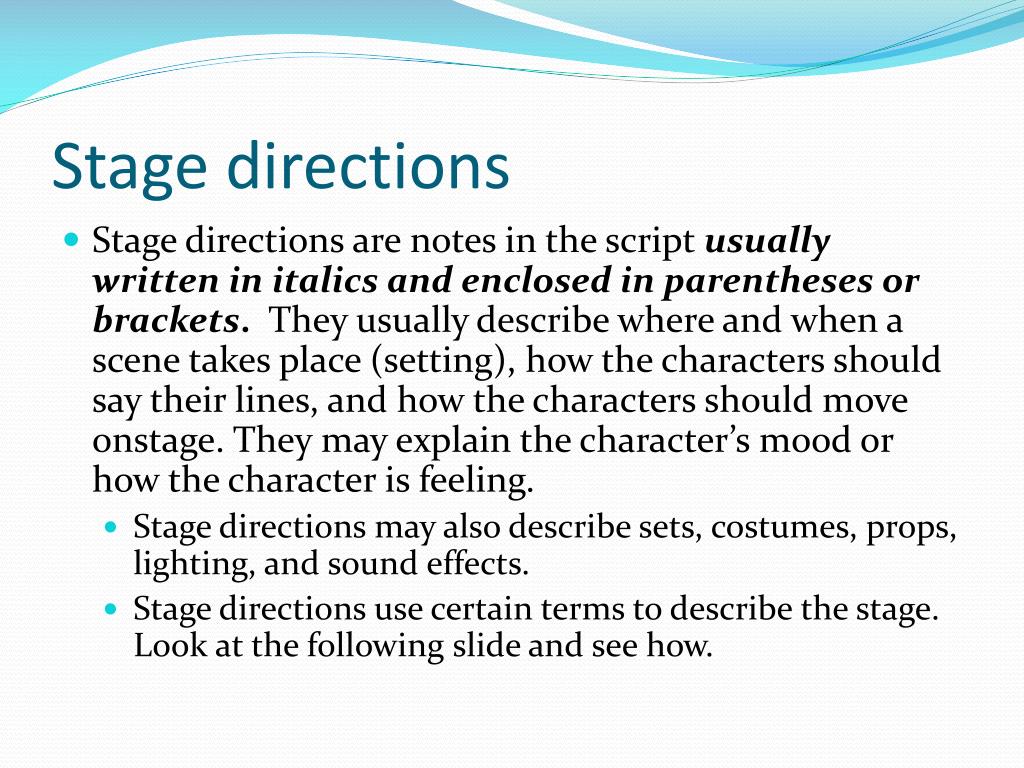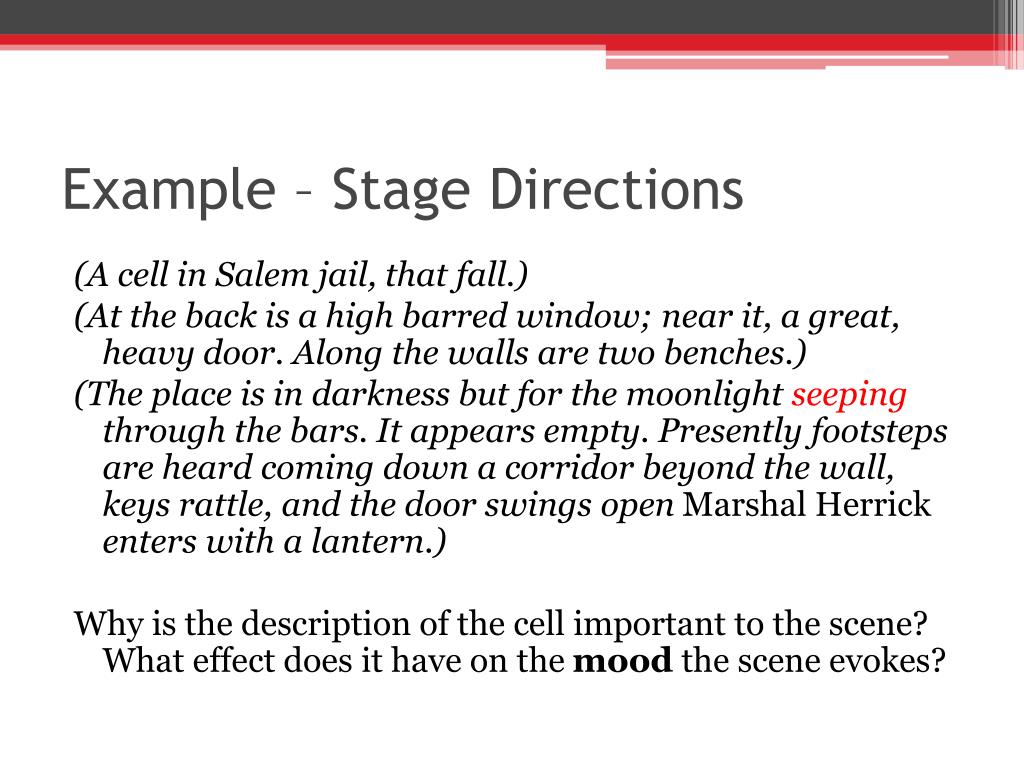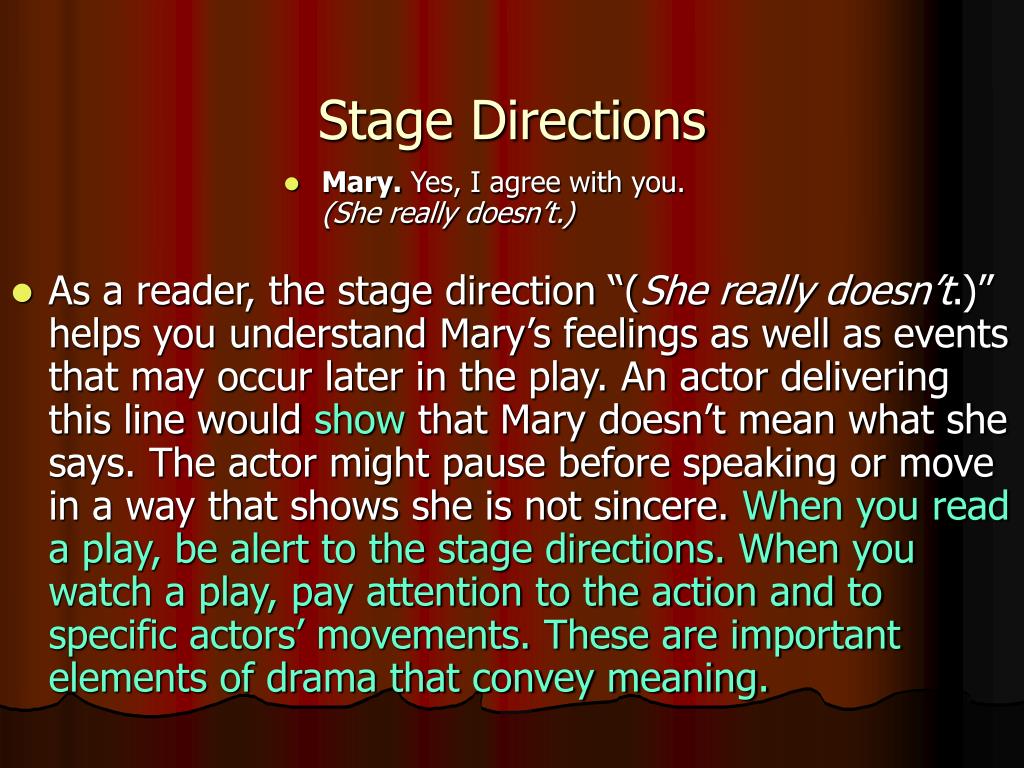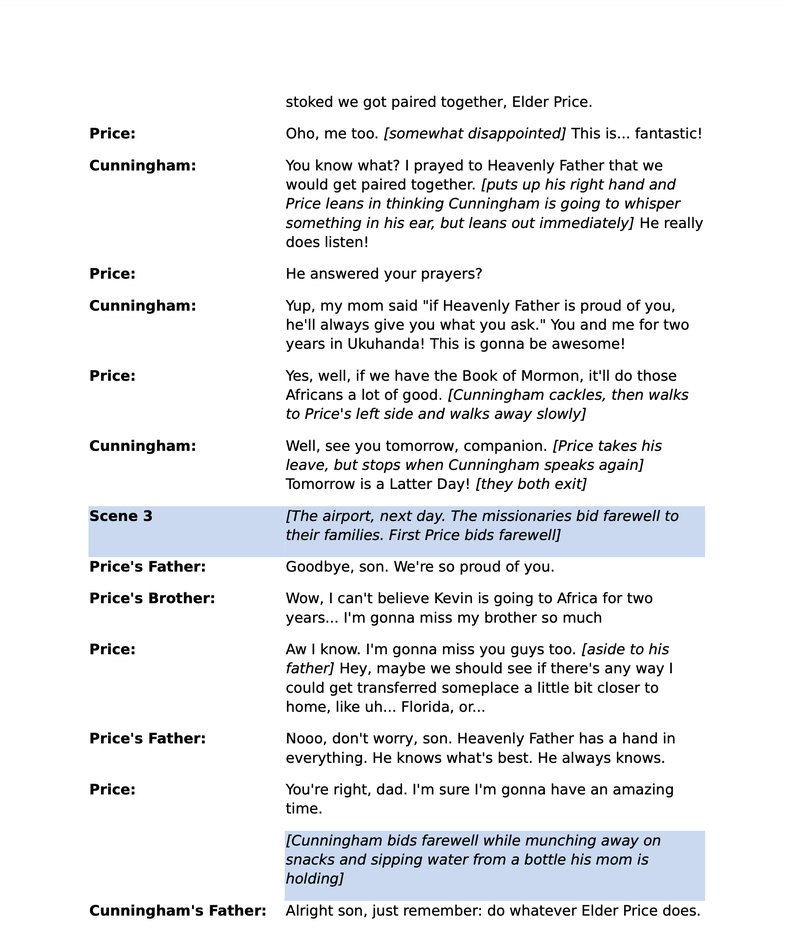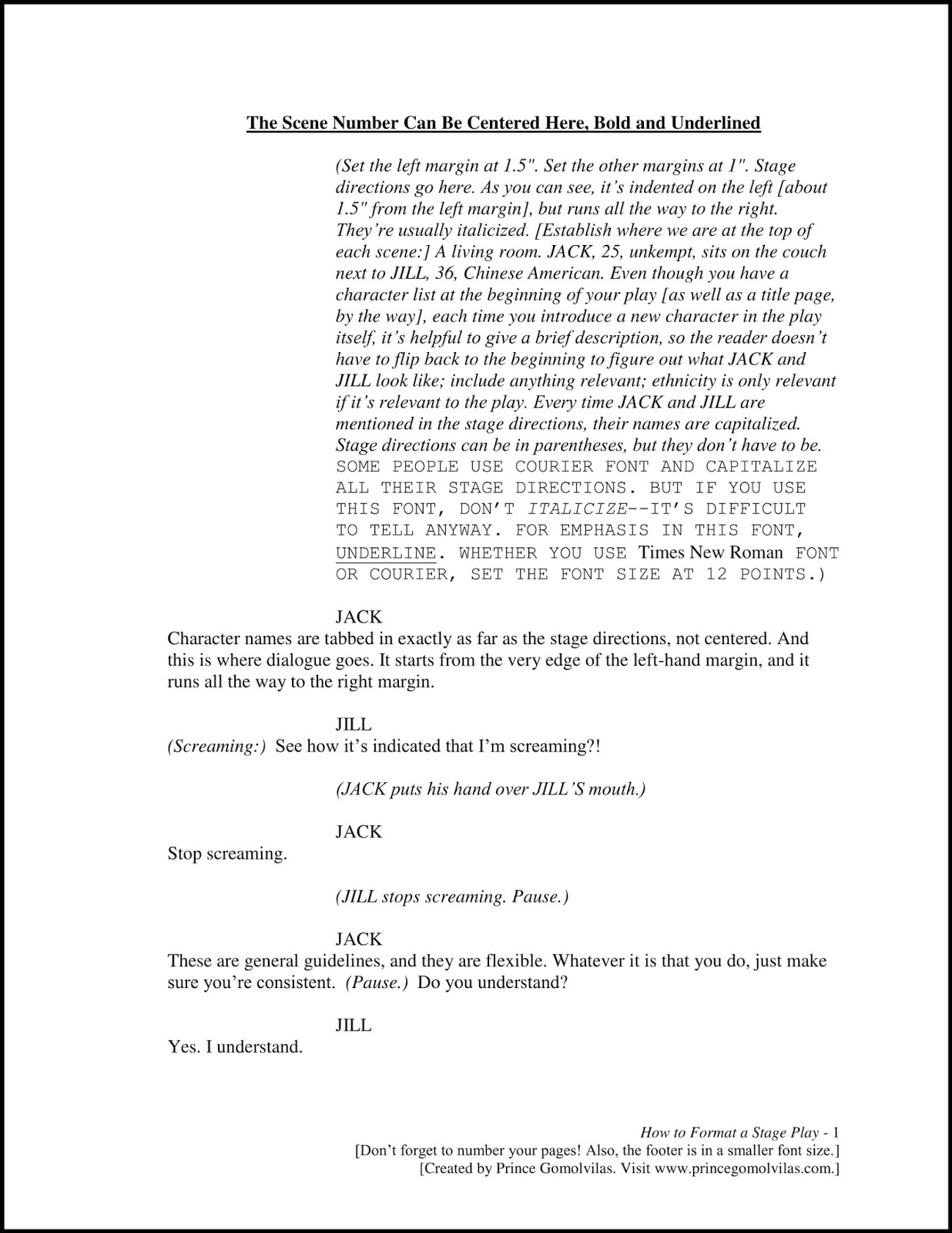Recommendation Info About How To Write Stage Directions For A Play

In this post, we explain how to write a good stage play through the following 10 top tips.
How to write stage directions for a play. How to write a play. Lyrics are written in all caps,. Though every story is different, most plays fall into categories that help the audience understand how to interpret the.
Writing a play takes time and effort. Stage directions, often italicized or bracketed in the script, serve as the playwright’s voice within the narrative. Utilize short, easy to read directions that engage.
How to write your play: Below are a few easy steps that will. Stagemilk / plays / how to write a play.
You may use abbreviations and don't need to go into exhaustive detail. Use italics to indicate stage directions. Writing with characters in platform directions.
Many people want to write stage plays, but wanting to writing a play and knowing how to write a play a two different things. Plays are broken down into acts, and an act ends when the curtain comes down. Each line of stage directions on the page should not extend past.
Follow these steps to write a play script: Keep the plot focused on an essential theme. If you're writing a musical or a play with music, if words are to be sung, they need to be set apart from spoken dialogue.
Stage directions all stage directions appear in parentheses, 2.75 inches from the left edge of the page. Stage directions are not written in paragraph form. A direction at the start of a speech (immediately following the speaker's name) should start with a capital letter.
If you don’t have a plot, you don’t have a play. A stage play is a story written that’s intended to be performed in a theater. Stage plays usually include a character glossary (dramatis personae), setting and time,.
They also guide lighting, sound,. Indent your stage directions one tab. But since plays are a group effort and.
Decide what kind of story you want to tell. To develop an outline, write out the beginning, middle and end of your play first. Stage directions serve as instructions for actors’ movements, emotions, and interactions with props and set pieces.
